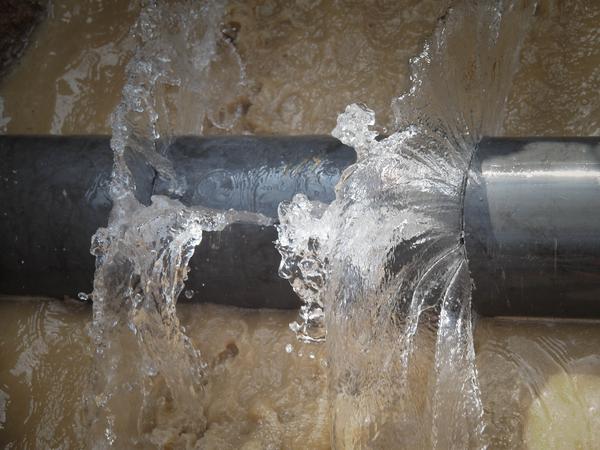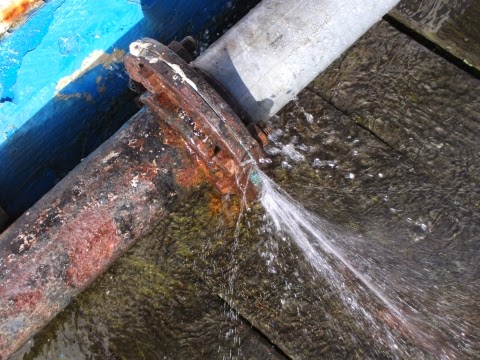Stop the Flood: Methods for Finding and also Taking Care Of Burst Pipes
Stop the Flood: Methods for Finding and also Taking Care Of Burst Pipes
Blog Article
Have you been interested in facts concerning How to install a dishwasher safely?

A ruptured pipeline is a major emergency; you can just stand as you see water you pay dearly to rejoin with the planet. In worse situations, you see a pool on your kitchen area flooring, which is a fantastic journey threat, especially if you have kids around. If the pipeline that burst was in your wall surfaces, trouble: you may need to repaint that whole area.
How can a disaster like a burst pipeline be protected against and handled? Well, by paying attention to your specialist emergency plumbers as well as complying with these regulations.
How do I know when my pipes have burst?
Varying water stress
Pipelines do not simply burst in a day. You may have noticed that your kitchen area tap or shower does not run promptly when you transform the faucet. It may pause for a few seconds and after that blast you with even more pressure than normal.
In various other circumstances, the water might appear normal at first, then drop in pressure after a few seconds.
Polluted water
Lots of people presume a ruptured pipeline is a one-way electrical outlet. Rather the contrary. As water drains of the hole or laceration in your plumbing system, pollutants discover their method.
Your water might be polluted from the resource, so if you can, inspect if your water storage tank has any type of issues. Nevertheless, if your drinking water is supplied and purified by the city government, you should call your plumber instantly if you see or smell anything funny in your water.
Puddles under pipelines and also sinks
When a pipeline ruptureds, the discharge develops a puddle. It may appear that the puddle is growing in dimension, and also despite the amount of times you wipe the puddle, in a few minutes, there's another one waiting to be cleansed. Usually, you might not have the ability to trace the puddle to any kind of noticeable pipes. This is a sign to call a professional plumber.
Damp wall surfaces as well as water spots
Before a pipeline ruptureds, it will certainly leak, most times. If this persistent dripping goes undetected, the leak may finish right into a broad gouge in your pipe. One very easy method to avoid this emergency is to keep an eye out for damp walls ad water discolorations. These water spots will lead you right to the leak.
Untraceable trickling noises
Pipe ruptureds can occur in the most undesirable locations, like within concrete, inside walls, or under sinks. When the house goes quiet, you may be able to listen to an irritatingly persistent trickling sound. Also after you've examined your shower head as well as kitchen faucet, the leaking may continue.
Beloved reader, the trickling might be coming from a pipeline inside your walls. There isn't much you can do concerning that, other than inform a professional plumber.
Turn up the Warmth
Set up fans to blow heat right into cold areas. Maintain the garage door closed. If you have actually minimized water flow, warm the most prone pipes (generally in basements and also crawl spaces or near exterior wall surfaces) with a hair dryer. Leave the tap on while you apply warmth. As you melt ice, the circulation will increase. To avoid pipes from freezing, shield your walls.
Beginning Eliminating the Water
Get the wipe, containers and also a store vacuum to begin to eliminate the water due to the fact that you definitely don't desire it soaking right into everything else in your home. Plus, a fast clean up will lower the possibilities of something getting musty.
What do I do when I spot a ruptured pipe?
Your water meter will remain to run even while your water wastes. To decrease your losses, find the major controls and transform the supply off. The water mains are an above-ground framework beside your residential property.
How to Fix & Detect a Leaking Pipe
How Do I Know if a Pipe is Leaking?
Leak detection tests can help you determine if your pipe has a leak. Even if you don’t see an apparent leak, you should still conduct leak detection tests regularly to save water and money—and prevent major damage to your home.
Water meter. It can be helpful to figure out what your usual water meter usage numbers are and then monitor them regularly. To monitor your meter, first, turn off all water faucets in your home. Check the meter and write down the numbers. In a few hours, check the meter again. If the numbers have changed, you have a leak. Water gauge. Use a water gauge to test your water pressure. Your showerhead should produce a certain amount of water pressure based on its model and design. If the pressure is lower than it is supposed to be for that specific showerhead, your home likely has a leak. Puddles. Look inside your bathroom, laundry, and kitchen sink cabinets. Puddles around the cabinets or around toilets, tubs, showers, and washing machines indicate the presence of a leaking pipe. You may also notice loose tiles, peeling or flaking paint, or mold caused by water accumulation. Napkin test. Even if you don’t see any puddles, you may still have a leak. You can test for water leaks in the bathroom, laundry, and kitchen by wiping below-sink connections with a napkin, paper towel, or piece of toilet paper. If it becomes damp, you probably have a leaking pipe under the sink. Discolored walls. Walls that are discolored—usually with brown or yellow stains—or bulging might mean that they have been impacted by water damage caused by a leaking pipe. Smell. A leaky pipe will create sitting water, and over time, that water may develop a musty smell. If your home smells musty, but you can’t locate the source, it may be due to a leak. Steps for Fixing a Leaking Pipe
A leaky drain can be remedied by tightening the pipe base, replacing the drain seal, caulking the rim, and tightening the pipe nut. Similarly, a leaking toilet pipe can be treated by tightening the packing nut. You may also need to replace the valve. A leaky faucet may just need tightening or replacement of the washers. If that doesn’t work, consider replacing your faucet. If your pipe has a hole in it, you may want to use a pipe leak sealer or pipe leak tape. This quick fix for water pipe leaks can also temporarily fix a copper pipe leak. https://www.ahs.com/home-matters/quick-tips/how-to-tell-if-pipes-are-leaking/

I recently found that article on What to Know Before Installing a Dishwasher when scouting around the internet. Do you know about someone else who is occupied with the subject? Be sure promote it. Thank you for your time spent reading it.
Schedule Service
Report this page